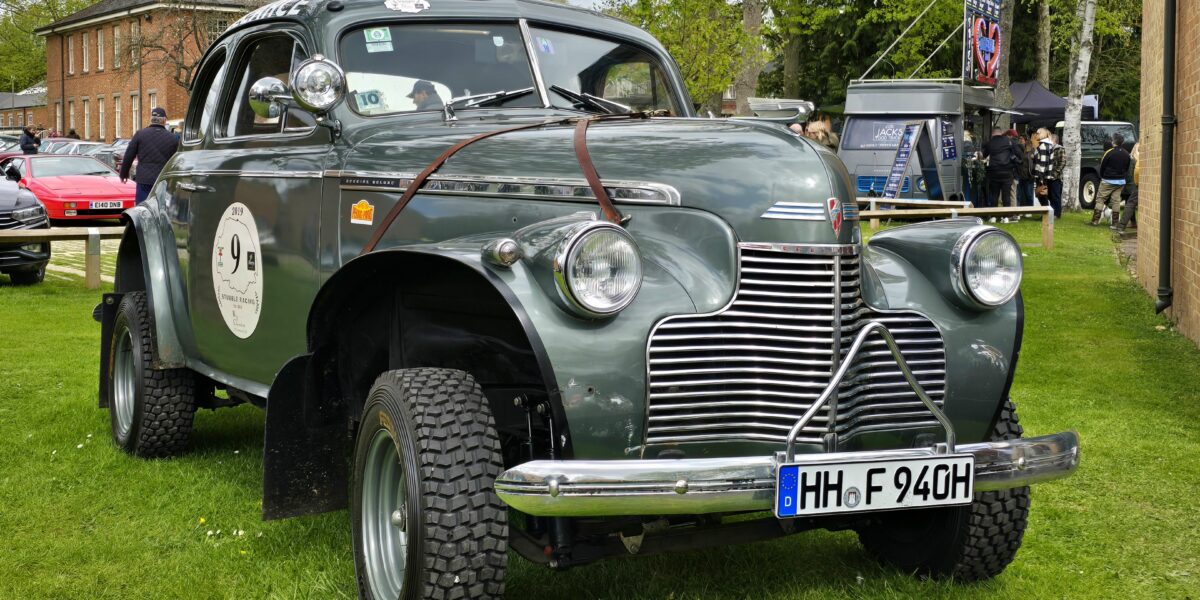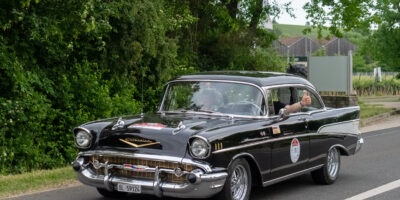1940 Chevy
The 1940 Chevy: A Snapshot of Automotive History
In 1940, Chevrolet introduced a model that would leave a lasting imprint on the automotive world. The 1940 Chevy series not only catered to various customer needs, but also pioneered some significant advancements in car design and technology of its time. Let’s delve into its details.
Design and Body Styles
Chevrolet offered the 1940 models in various body styles, including coupes, sedans, and convertibles. Each body style had a distinctive appeal, tailored to different tastes and practical needs. The most popular styles were the two-door and four-door sedans.
The design featured an Art Deco influence, which was common in the late 1930s and early 1940s. The sleek and streamlined body was a departure from the more boxy designs of the previous decade. Fender lines were smooth and flowed seamlessly into the body, providing an integrated appearance. The grille was expanded, giving a bold yet elegant look to the front fascia.
Interior Features
The interiors were thoughtfully designed, incorporating both functionality and comfort. The cabin offered more legroom and wider seats than earlier models. Upholstered in durable materials, the seats provided a comfortable ride, even on long journeys.
Dashboards were simple but featured essential gauges such as speedometer, fuel gauge, and oil pressure indicator. The steering wheel design was noticeably robust, providing better control for the driver. Chrome accents added a touch of elegance to the otherwise straightforward interior layout.
Engine and Performance

The 1940 Chevy came equipped with a 216 cubic inch inline-six engine. Known as the Blue Flame Six, this engine was noted for its reliability and performance. It produced around 85 horsepower, which was competitive for its class. The engine was mated to a three-speed manual transmission, providing a good balance between speed and fuel efficiency.
Chevrolet also focused on improving the car’s suspension system. A new knee-action front suspension was introduced, improving handling and ride quality. This made the 1940 Chevy more responsive and easier to drive, especially on uneven roads. Braking systems were mechanical but well-engineered, ensuring effective stopping power.
Performance wasn’t just about speed; durability and reliability were key. The 1940 Chevy proved to be a resilient vehicle, capable of enduring long drives with minimal maintenance. This was crucial during a time when road conditions were not as developed as they are today.
Technological Innovations
One of the major advancements in the 1940 Chevrolet was the implementation of hydraulic brakes. While not a brand-new technology at the time, its inclusion made for safer and more consistent braking performance. This was a significant improvement over the mechanical brakes used in earlier models.
The car also featured sealed-beam headlights, which were brighter and more reliable than the previous bulb-and-reflector design. This was a crucial safety feature, particularly for night driving.
Another technological stride was the introduction of the Independent Front Suspension (IFS). It enhanced the driving dynamics, providing a smoother ride and better handling. This suspension system allowed each front wheel to move independently, reducing the impact of road irregularities.
Sales and Market Reception
The 1940 Chevy was a commercial success. Buyers were attracted to its blend of style, performance, and value. Its competitive pricing made it an attractive option for a wide range of consumers. During this period, Chevrolet was already a well-established brand, and the success of the 1940 model further solidified its reputation.
The car was well-received by automotive critics as well. Reviews highlighted its reliability, ease of maintenance, and driving comfort. Many owners were also pleased with the availability of spare parts, which made it easy to keep the car in good running condition.
Impact on Future Models
The 1940 Chevy set a precedent for subsequent models. Its blend of technology, comfort, and style acted as a blueprint for Chevrolet’s future vehicles. The innovations and design principles were carried forward, influencing the development of cars in the 1940s and beyond.
Legacy and Collectibility
Today, the 1940 Chevy holds a special place among classic car enthusiasts. Its enduring design and historical significance make it a sought-after model for collectors. Restored versions can be found at car shows and auctions, often fetching considerable prices.
Many owners choose to preserve the original specifications, while some opt for modern upgrades to improve performance and safety. Regardless of modifications, the essence of the 1940 Chevy remains intact, showcasing an important era in automotive history.
Customization and Hot Rodding
The robust build and simple mechanics of the 1940 Chevy made it a favorite in the hot rodding community. Customizers often modified its engine, suspension, and aesthetics to create unique and personalized vehicles. The adaptability of the 216 engine allowed for various performance enhancements, making it a popular choice for those looking to boost horsepower and speed.
Body modifications were also common. Enthusiasts would shave door handles, chop roofs, and apply custom paint jobs to make their vehicles stand out. Despite these changes, the core integrity and charm of the 1940 Chevy’s design persisted.
Parts Availability and Restoration
The availability of parts plays a crucial role in the car’s enduring popularity. Many parts are still manufactured, though some original components can be hard to find. Restoration projects often become a labor of love, as enthusiasts hunt for authentic parts to bring these classic cars back to their original glory.
Restoration shops specializing in vintage Chevrolets offer services and guidance for maintaining authenticity. Online forums and clubs provide valuable resources and community support for those undertaking restoration projects.
Community and Clubs
The 1940 Chevy has a dedicated following. Enthusiast clubs and online communities bring together people who share a passion for this classic vehicle. These platforms offer resources, advice, and camaraderie. Events and meetups provide opportunities for owners to showcase their cars, share restoration stories, and exchange tips.
Automotive enthusiasts often cite the sense of belonging and shared history as key reasons for participating in these clubs. The 1940 Chevy is more than just a car; it’s a piece of history that brings people together.
Notable Mentions in Media
The 1940 Chevy has made appearances in movies, TV shows, and advertisements, further cementing its place in popular culture. Its iconic design and classic appeal make it a favored choice for period pieces and nostalgic retrospectives. These appearances contribute to its enduring legacy and visibility.
Chevrolet’s Brand Evolution
The success of the 1940 Chevy played a pivotal role in shaping Chevrolet’s brand identity. The lessons learned from its design, marketing, and public reception influenced subsequent models. Chevrolet’s commitment to innovation, reliability, and customer satisfaction can be traced back to benchmarks set during this era.
Understanding the legacy of the 1940 Chevy provides insight into the brand’s evolution. It showcases how foundational principles can define an automaker’s direction for decades to come.
nn
Essential Classic Car Resources
n
Every classic car enthusiast needs the right resources and products:
nn
The Complete Restoration Guide
n
The Complete Idiot’s Guide to Restoring Collector Cars – Whether you are buying your first classic or restoring a barn find, this comprehensive guide covers everything you need to know.
n
nn
Premium Car Care Kit
n
Chemical Guys Complete Car Care Kit – Professional-quality car wash and detail products to keep your classic looking showroom-fresh.
n
n
As an Amazon Associate, we earn from qualifying purchases.




Subscribe for Updates
Get the latest articles delivered to your inbox.
We respect your privacy. Unsubscribe anytime.